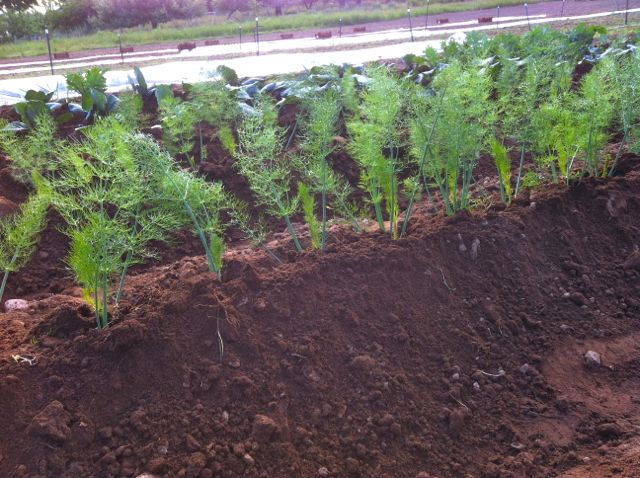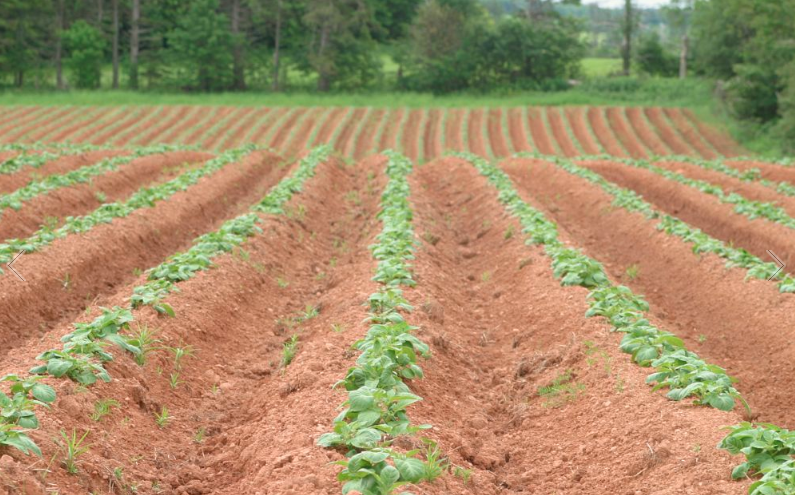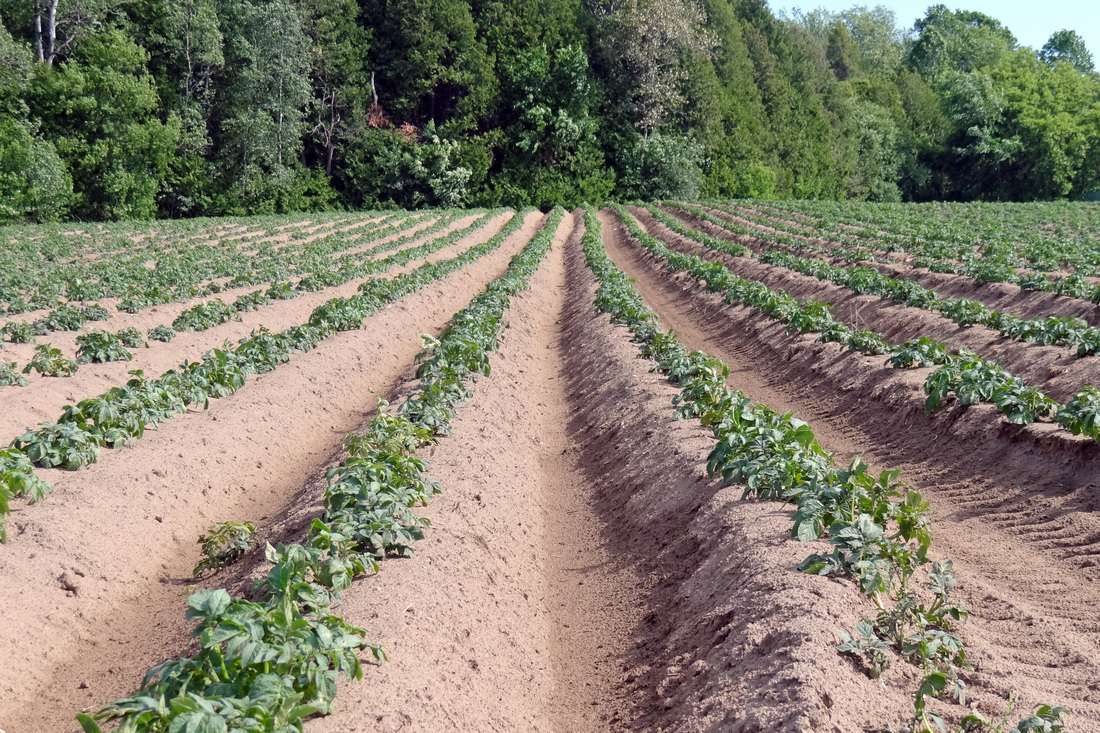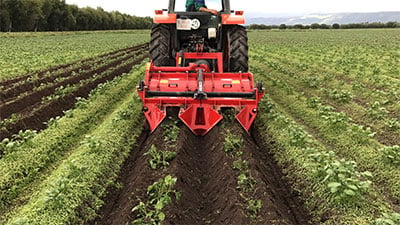News
Ridging: A Technique You Will Be Hooked To
News _ 30 NOVEMBER _2019
Ridging technique is mostly used in horticulture and allows to cover with the soil present between the rows, the basis of the plant. It’s a traditional method, often used in both small gardens and big open fields, since can bring various benefits.
In this article, we will study this cultivation technique, discovering when and how to ridge and most of all, why it is so important for vegetable crops. In the end, you will be able to recognize which solutions you will need to protect your plants and get a bigger harvest.
What is ridging and what kind of benefits can it bring?

There are different benefits which can be brought to these crops. According to the objective the farmer wants to achieve, this technique can get various names, as listed here below:
- Support ridging. The higher quantity of the soil for the plant, the bigger will be the place where it can grow. In this situation, the roots and the stolons can develop without problems. Furthermore, a great quantity of soil helps the transition of nutrients (minerals and water) which can raise the quality of the crop;
- Protection ridging. Ridging technique helps to protect the most delicate parts of the plant, in case of bad weather conditions and extremely low temperatures, which may cause damages or death of the plant. In addition, the plant can also face drought periods more easily, thanks to a better water distribution in the soil and, in case of strong wind, it will be safely fixed to the ground;
- Control ridging. Moving part of the soil between the rows to the plants’ basis, allows to eliminate already grown weeds. In this way, the crop enlarges, and weeds are no more able to find space and light to develop;
- Bleaching ridging. This is the ideal technique, not only for potato crops, but also for fennel, celery, leek, and other similar vegetables. Thanks to a bigger quantity of soil around the stem, the sun rays are kept away. As consequence, the vegetable stays white and soft, emphasizing its aesthetic and taste properties.
Furthermore, in the specific case of potato, ridging offers a good method of prevention of superficial tubers greening, which causes the formation of substances capable of affect the flavor of the vegetable.
When do ridging?

Autumn ridging has mostly a prevention function, since allows to defend the plant from low temperatures and greening of the tubers, caused by heavy rains.
Springtime ridging has an improving effect, since aims to increase the productivity and quality of the crop (referring to bleaching and support ridging, in case of celery, fennel and similar crops).
What about life cycle of the crop? It’s better that ridging is made just after the plant is born. This operation is in fact more difficult when the plant is already ripened as in such case it is necessary to pay attention to the superficial leaves and roots of the plants. In addition to this, is necessary to not tighten too much the soil around the basis of the stem of the plant; this in fact may slow down its development.
How to ridge and which machinery to use?
As explained above, ridging is a very important operation, which can remarkably influence the final result of the crop. It’s necessary make it properly.

Ridging is a complicated operation for any kind of vegetable. For this reason, the farmer has to be experienced and has to use the proper implements. Such implement should refine the soil and then transfer the right quantity of soil towards the plant’s base.
Ridging machines are designed to properly perform this technique, avoiding any damage to the crop. These machines can work on more rows at once, speeding up ridging operations. Furthermore, such machinery can be customized according to the type of vegetable and to the type of soil tillage which has to be performed.
Ridgers made by Forigo Roter Italia are developed to perform an active ridging after the seeding of the vegetable. These machines can be equipped with rear bed former hoods which can form the soil in height and width before seeding or transplanting sessions.
The advantages provided by these solutions are impressive:
- Speeding-up the process. The same machinery is used for different operations, thanks to the possibility of fitting special blades and adapters for bed making;
- Efficacy. The ridgers can be tailor-made according to the type of crop and of soil;
- Accuracy. These machines can maintain the seed bed as intact as possible, minimizing the risk of damage to the plant during the ridging operation.
Conclusion
In this article we analyzed what ridging is about, for which crops is suited, what kind of benefits can it bring and how to perform it properly and fast. It’s a traditional agricultural technique which not only protects the plants from the weeds and the weather, but also brings a lusher crop. For this reason, it is crucial to utilize the best ridging machines, which can perform this operation in a fast and accurate way.
In case you still have some doubts or questions concerning the ridging technique or you would like to receive more information about Forigo ridgers, do not hesitate to contact us: we will be glad to answer your questions and show you the best solutions to satisfy your needs.

Research and Development Division of Forigo Roteritalia. Team of experts engaged in the study and analysis of the main agricultural and horticultural techniques used today. Knowledge combined with competence are the starting point for continuous improvement in a scenario of innovation and technological development.
Upcoming Exhibitions
30 NOVEMBER _2021
DLR Feldtag Gemüsebau 2021: horticulture and field trials in Germany
30 NOVEMBER _2019
Orticoltura Tecnica in Campo – XVII edition
30 NOVEMBER _2019
Agrilevante 2019: where agriculture become the main focus
Previous Exhibitions
30 NOVEMBER _2019
Expo Agrofuturo 2019: sustainability and innovation in South America
30 NOVEMBER _2019
Tech&Bio 2019: sustainable agriculture goes to France
30 NOVEMBER _2019
Enovitis 2019: innovation in viticulture













